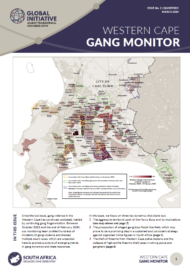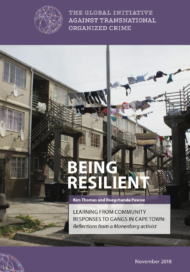Posted on 18 Oct 2023
This is the first report of the GITOC’s Western Cape Gang Monitor, an output of our new Observatory of Organized Crime in South Africa. This series of bulletins will continue to track developments in Western Cape gang dynamics each quarter, to provide a concise synthesis of relevant trends to inform policymakers and civil society.
The monitor draws on information provided by field researchers working in gang-affected communities of the Western Cape. This includes interviews with current and former gang members, civil society and members of the criminal justice system.
Over the past three months, our team has monitored and recorded almost a thousand instances of gang-related violence, which are unpacked here to provide a picture of some emerging trends in gang behaviour. The key findings analyzed here have been selected, as they would appear to be emblematic of broader trends in gang social dynamics, and because they have been under-reported elsewhere, or may have repercussions for how we understand developments in Western Cape gang violence.
In this first issue of the Gang Monitor, we also include a summary of key dynamics to watch, which draws on a longer-term view of how the gang landscape has changed in recent years. The analysis is based on the GI-TOC’s research over several years identifying how Western Cape gang dynamics have developed and to help us understand how they may continue to in future.
This series of bulletins will continue to track developments in Western Cape gang dynamics each quarter to provide a concise synthesis of relevant trends to inform policymakers and civil society. The monitor draws on information provided by field researchers working in gang-affected communities of the Western Cape. This includes interviews with current and former gang members, civil society and members of the criminal justice system.




